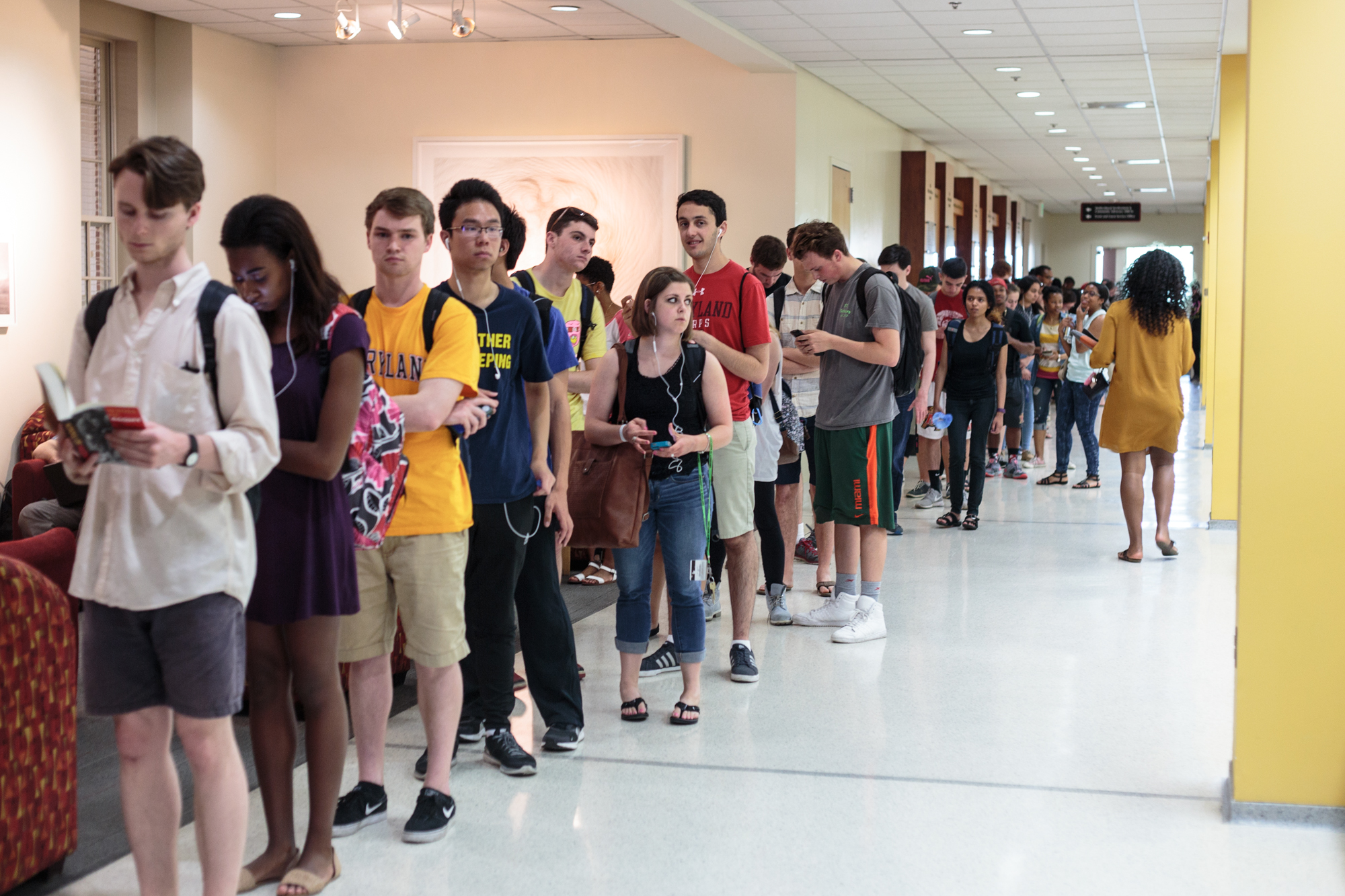As Maryland students finish up with early voting on Nov. 3 and others prepare to face the polls for the 2016 presidential election on Nov. 8, they may not recognize a few names as they scan down the ballot.
Millennials, as well as other demographics, generally don’t know enough about down-ballot candidates — individuals running for the state Senate and House, circuit court or state Board of Education — as they should, said Stella Rouse, a government and politics professor and Center for American Politics and Citizenship director at the University of Maryland.
“I preach that to my students all the time, to my state and local politics class,” Rouse said. “The top of the ticket gets the most attention, and that’s what people base their decision on unfortunately, and it really shouldn’t be that way.”
Democratic Rep. Chris Van Hollen and Republican Delegate Kathy Szeliga are vying for retiring Sen. Barbara Mikulski’s vacant Senate seat, while Margaret Flowers is running as the Green Party candidate. Van Hollen is polling more than 30 points ahead of Szeliga, according to the most recent poll from The Huffington Post.
Further down the ballot, this state’s candidates for congressional representative are Mark Plaster (R), John Sarbanes (D), and Nnabu Eze (Green). This year’s circuit court judge position is uncontested, with Mary Kramer being voters’ only choice. Lastly, 10 of Maryland’s 15 school districts are holding board of education elections, for which 33 seats are up.
Oftentimes, Rouse said, the down ballot candidates are overlooked simply because “it takes a lot of time and effort to become informed.”
These local elections are more important than the other races because, “Most of the laws that affect our day-to-day lives are at the local level,” said junior Jacob Veitch, president of this university’s College Republicans and a government and politics and international business major.
Rouse echoed this sentiment.
“When we start thinking about electing people to office and how it affects our local tax dollars and our services, that’s at the local and state level,” Rouse said. “We think about city council, Board of Education . . . these are the races that matter but they receive the least attention and have the lowest voter turnout.”
Nearly 2.5 million Maryland voters turned out to vote in the 2012 presidential elections, versus about 1.65 million during the 2014 midterm elections, according to POLITICO. The national voter turnout for the 2014 midterms was the lowest it’s been in any election cycle since World War II, with only 36.4 percent of voters casting ballots, according to The Washington Post.
However, both Veitch and junior Jake Polce, president of this university’s College Democrats, said members of their organizations have been keeping up with the Senate and congressional campaigns.
“While a lot of the focus is on the presidential election, we have students that understand the importance of down ballot races and are really getting involved in a big way,” said Polce, a government and politics major.
But this isn’t just a student issue, Student Government Association President Katherine Swanson said.
“As a whole, the country knows less about down ballot races,” the senior government and politics major said. “I think students definitely do [too], but it’s kind of a result of our parents not knowing a lot about this.”
The amount of media attention geared toward state and local races — or lack thereof — also plays a huge role in publicity, Veitch and Polce said.
“Media coverage for the presidential election is high, maybe I would say too high,” Polce said. “You never hear anything about down ballot races. I mean maybe in a state with a tight race … which Maryland is not.”
Maryland Democratic voters currently outnumber Republicans 2-1. The state Senate and House of Delegates also lean democratic, with the democrats outweighing republicans 32-14 in the Senate and 91-50 in the House.
But not all of the blame should fall on voters, Rouse said, adding that candidates should try to make it an easier task for constituents to be aware.
“Down ballot candidates themselves could do a better job of reaching out to make the races better known and reaching out to millennials [and] . . . inform constituencies of the importance of these races,” Rouse said.
Traditionally, many voters will choose a down ballot candidate corresponding to their political party, Rouse said. However, Rouse said she believes there will be a lot of “split-ticket voting” this election cycle.
“People in this election, if they see either one of these folks as president, they want to balance them with a Congress that will keep them in check, so that may motivate [split ticket voting,]” Rouse said. “That occurs [at] a large extent every election, but especially this one given the unpopularity of [Hillary Clinton and Donald Trump].”
CORRECTION: Due to a reporting error, a previous version of this article incorrectly said Green Party candidate Margaret Flowers was running for the U.S. House of Representatives. Flowers is running for Senate. This article has been updated.



